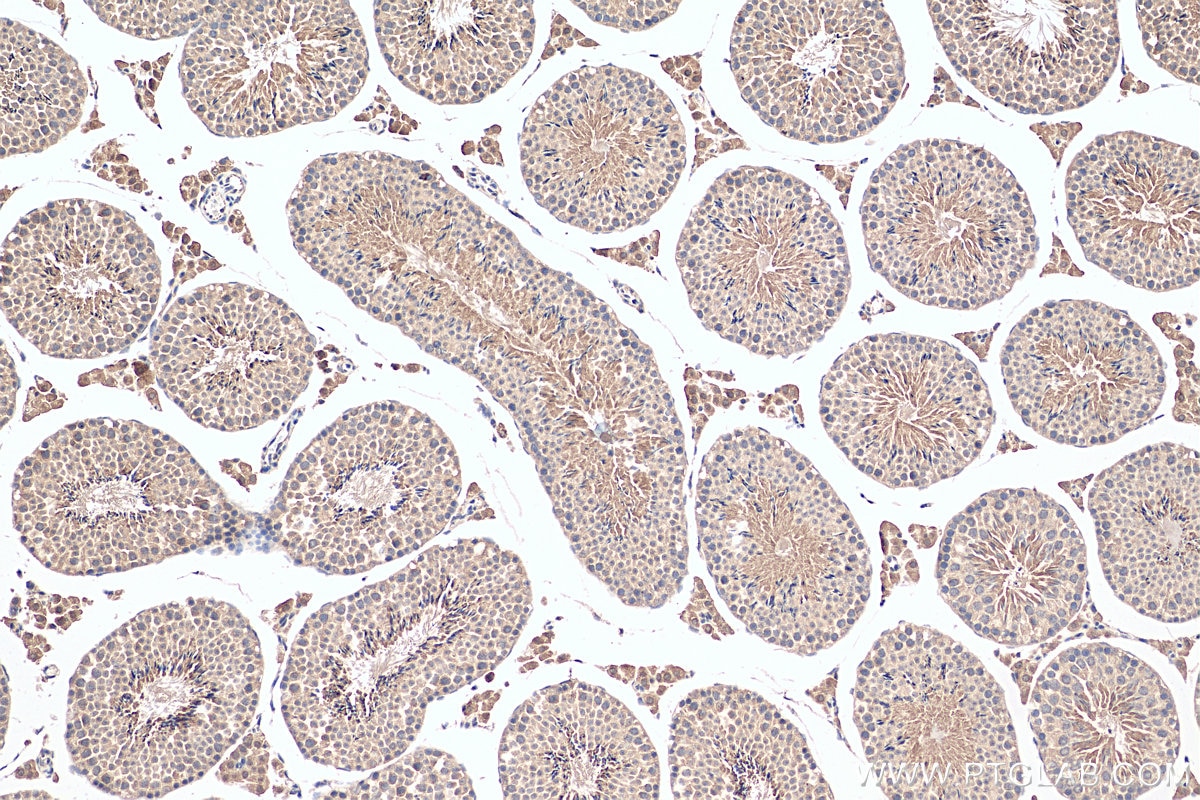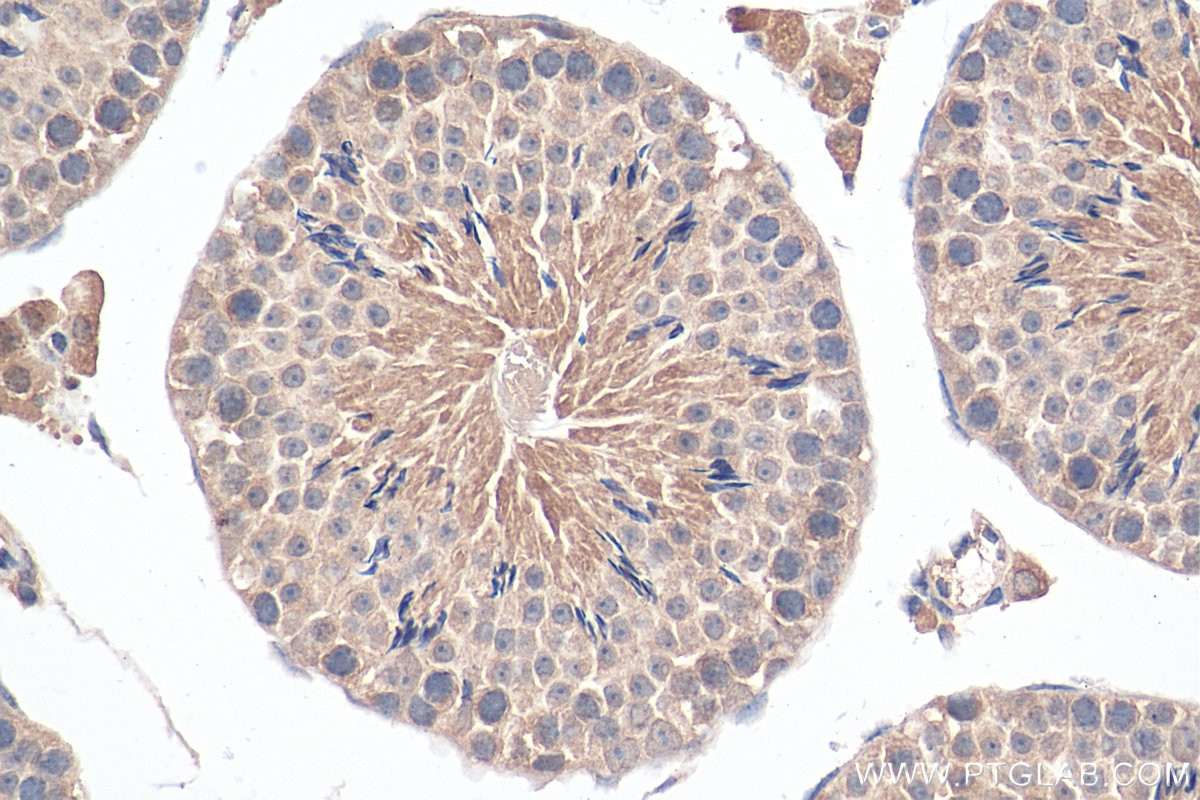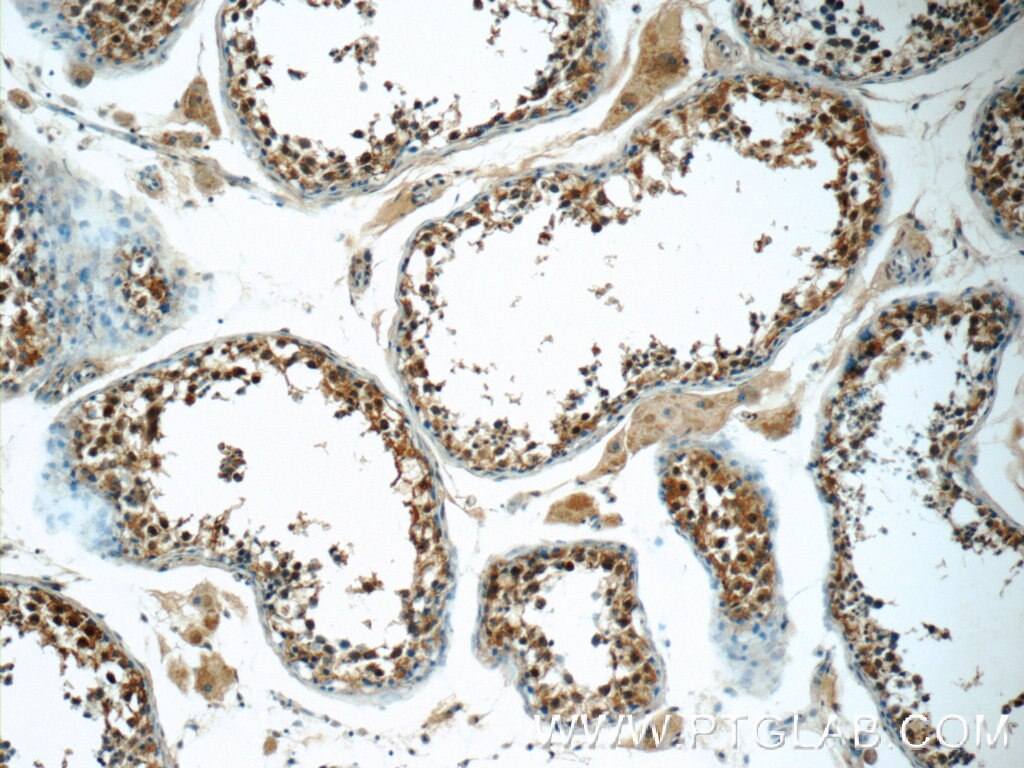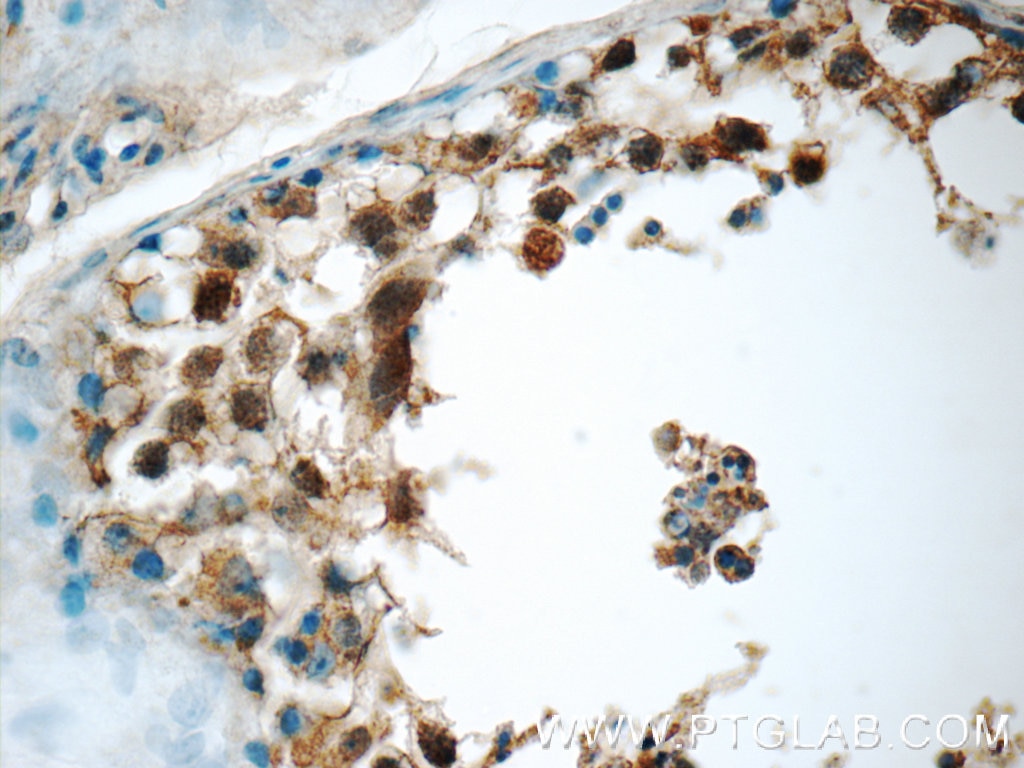SCAPER Polyclonal antibody
SCAPER Polyclonal Antibody for IHC, ELISA
Host / Isotype
Rabbit / IgG
Reactivity
human, mouse
Applications
IF, IHC, ELISA
Conjugate
Unconjugated
Cat no : 16994-1-AP
Synonyms
Validation Data Gallery
Tested Applications
| Positive IHC detected in | mouse testis tissue, human testis tissue Note: suggested antigen retrieval with TE buffer pH 9.0; (*) Alternatively, antigen retrieval may be performed with citrate buffer pH 6.0 |
Recommended dilution
| Application | Dilution |
|---|---|
| Immunohistochemistry (IHC) | IHC : 1:50-1:500 |
| It is recommended that this reagent should be titrated in each testing system to obtain optimal results. | |
| Sample-dependent, Check data in validation data gallery. | |
Published Applications
| IHC | See 1 publications below |
| IF | See 1 publications below |
Product Information
The immunogen of 16994-1-AP is SCAPER Fusion Protein expressed in E. coli.
| Tested Reactivity | human, mouse |
| Cited Reactivity | mouse |
| Host / Isotype | Rabbit / IgG |
| Class | Polyclonal |
| Type | Antibody |
| Immunogen | SCAPER fusion protein Ag10679 |
| Full Name | S-phase cyclin A-associated protein in the ER |
| Calculated Molecular Weight | 292 aa, 32 kDa |
| GenBank Accession Number | BC015212 |
| Gene Symbol | SCAPER |
| Gene ID (NCBI) | 49855 |
| RRID | AB_2878339 |
| Conjugate | Unconjugated |
| Form | Liquid |
| Purification Method | Antigen affinity purification |
| Storage Buffer | PBS with 0.02% sodium azide and 50% glycerol pH 7.3. |
| Storage Conditions | Store at -20°C. Stable for one year after shipment. Aliquoting is unnecessary for -20oC storage. 20ul sizes contain 0.1% BSA. |
Background Information
SCAPER, also named as KIAA1454 and ZNF291, is a CCNA2/CDK2 regulatory protein that transiently maintains CCNA2 in the cytoplasm.
Protocols
| Product Specific Protocols | |
|---|---|
| IHC protocol for SCAPER antibody 16994-1-AP | Download protocol |
| Standard Protocols | |
|---|---|
| Click here to view our Standard Protocols |
Publications
| Species | Application | Title |
|---|---|---|
J Med Genet Mutations in SCAPER cause autosomal recessive retinitis pigmentosa with intellectual disability. | ||





